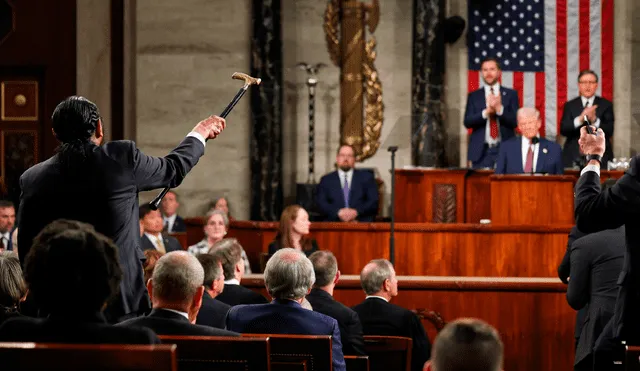Al Green censured as Democrats and Republicans condemn his protest during Trump’s speech
Rep. Al Green, D-Texas, faced censure from the House after disrupting President Donald Trump’s address to Congress. With ten Democrats joining Republicans, the vote underscored tensions within the party over how to handle objections against Trump’s leadership.

In a rare bipartisan move, the House of Representatives voted to censure Rep. Al Green after his vocal protest during President Donald Trump’s address to Congress. The Texas Democrat, who interrupted Trump’s discourse by shouting disagreements, was removed from the chamber by House Speaker Mike Johnson. While censure carries no formal punishment, it is a significant public reprimand, marking another instance of escalating political confrontations within the Assembly.
The election saw ten Democrats siding with Republicans, a decision that highlighted divisions within the Democratic Party. Legislature management had cautioned members against high-profile demonstrations during Trump’s lecture, urging restraint to avoid giving diplomatic leverage to the Grand Old Party (GOP). However, Green remained defiant, stating that his actions were a matter of conscience and that he was prepared to face any consequences.
What led 10 Democrats to vote with Republicans in censuring Rep. Al Green?
The move to condemn Rep. Al Green was not strictly along party lines, as ten Democrats joined House Republicans in the formal rebuke. Reps. Ami Bera (D-Calif.), Ed Case (D-Hawaii), Jim Costa (D-Calif.), Laura Gillen (D-N.Y.), Jim Himes (D-Conn.), Chrissy Houlahan (D-Pa.), Marcy Kaptur (D-Ohio), Jared Moskowitz (D-Fla.), Marie Gluesenkamp Perez (D-Wash.), and Tom Suozzi (D-N.Y.) decided in favor of the resolution, signaling internal divisions within the Democratic Party.
House Majority Whip Tom Emmer, R-Minn., criticized Green’s outburst, calling it a reflection of broader dysfunction within the Democratic National Committee (DNC). “Al Green’s childish outburst exposed the chaos and dysfunction within the Democrat Party since President Trump’s overwhelming win in November and his success in office thus far,” Emmer stated. The vote followed a failed attempt by House Democrats to block the censure verdict, reinforcing Republican efforts to hold Green accountable for what they described as a breach of decorum.
How has Al Green responded to his censure and what does it mean for Congress?
Despite the formal rebuke, Al Green stood by his decision to interrupt President Trump’s speech. Speaking on the House floor before the settlement, he acknowledged that he intentionally refused to comply when asked to stop. "I heard the speaker when he said that I should cease. I did not, and I did not with intentionality. It was not done out of a burst of emotion," Green declared. He defended his stance, arguing that some issues—such as healthcare—demand bold action, even if it leads to repercussions.
This latest disciplinary measure adds to a growing list of lawmakers who have faced similar actions, including Rashida Tlaib, Jamaal Bowman, and Adam Schiff. While the mandate does not impose direct penalties, it underscores the widening political divide in Washington. With both parties increasingly resorting to such choices, the situation raises broader concerns about how far members of Congress can go in voicing dissent before facing institutional pushback.












